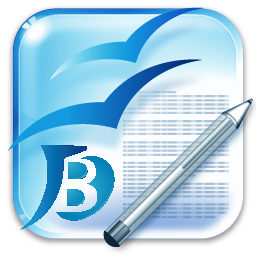Directed Reading Thinking Activity (DRTA) Method and Students' Critical Thinking Level in Editing Scientific Articles
Abstract
Keywords
Full Text:
PDFReferences
Andriani, D. (2017). "The Influence of Reading Comprehension Achievement at the Eighth Grade Students of SMP Muhammadiyah 1 Rawa Bening By Using DRTA and KWL Strategies". The Journal of English Language Studies, 02(01), 32–45.
Burrough-Boenisch, J. (2012). “Defining and Describing Editing.†In Supporting Research Writing: Roles and Challenges in Multilingual Settings (pp. 141–155). Https://doi.org/10.1016/B978-1-84334-666-1.50009-6.
Duron, R., Limbach, B., & Waugh, W. (2006). Critical Thinking Framework For Any Discipline. Interrnational Journal of Teaching and Learning in Higher Education, 17(2), 160–166. Https://doi.org/10.1016/j.nepr. 2006.09.004.
Ennis, R. H. (2011). "The Nature of Critical Thinking: An Outline of Critical Thinking Dispositions". Inquiry, 26(1), 1–8.
Havid, K. (2015). "Analisis Kesalahan pada Naskah Abstract Jurnal Ilmiah". Http://etd.repository.ugm.ac.id.
Liah, S. S. (2016). Analisis Kesalahan Ejaan dan Kalimat pada Artikel Jurnal Terakreditasi Jurnal Akuntansi dan Keuangan 2014 Universitas Kristen Petra. Universitas Sanata Dharma.
Masitah. (2014). "Pengaruh Sikap Pemikiran Kritis Terhadap Hasil Belajar Mahasiswa Program Studi Pendidikan Biologi FKIP Universitas Mulawarman".Jurnal SSIOêduKASI, 3(September),318–323.
Muttaqiin, A. (2015). "Hubungan antara Kemampuan Membaca Kritis dalam Pembelajaran Penemuan dan Kemampuan Berpikir Kritis Siswa". Edusentris, 2(2), 116. Https://doi.org/10.17509/edusentris. v2i2.165.
Neil, B. M., & M.Keeley, S. (2007). Asking The Right Questions: A Guide to Critical Thinking. New Jersey: Upper Saddle River.
Prasetyo, B. (2016). “Kemampuan Menyunting Teks Eksposisi Siswa Kelas X IPA SMA Negeri 1 Kendari.†Jurnal Bastra, 1 (1), 1–17. Retrieved from Kemampuan, Menyunting, Eksposisi.
Pujiono, S. (2012). “Berpikir Kritis dalam Literasi Membaca dan Menulis untuk Memperkuat Jati Diri Bangsa.†Jurnal Pendidikan dan Pembelajaran, 3(7), 778–783.
Sariyem, S. (2016). "Kemampuan Berpikir Kritis dan Minat Baca dengan Kemampuan Membaca Kritis Siswa Kelas Tinggi SD Negeri di Kabupaten Bogor". Jurnal Pendidikan Dasar, 7(2), 329. Https://doi.org/10.21009/JPD.072.11.
Stauffer, R. G. (1969). Directing the reading-thinking process. USA: Harper & Row.
Suhartono. (2014). "Pengaruh Kebiasaan Membaca, Kemampuan Berpikir Kritis, dan Penguasaan Struktur Sintaksis terhadap Keterampilan Menulis Ilmiahâ€. Lentera Pendidikan, 17(1), 43–65.
Suwartini, I., & Fujiastuti, A. (2017). "Teknik Pembuatan Buku Ajar Membaca Kritis dan Kreatif Berbasis Arcs (Attention, Relevance, Convidence, Satisfaction) untuk Mahasiswa Pendidikan Bahasa dan Sastra Indonesia". Bahastra, 37(2), 138. Https://doi.org/10.26555/bahastra.v37i2.7610.
Tierney, R. J., Readence, J.E., &Dishner, E.K. (1995). Reading Strategies and Practices: a Compendium. Edisi keempat. Amerika: Allyn & Bacon.
Walker, Barbara J., (2012). Diagnostic Teaching of Reading. Boston: Pearson Education.
Westwood, P. (2008). What teachers need to know about Reading and writing. (C. Glascodine, Ed.). Autralia: Ligare.
DOI: http://dx.doi.org/10.26555/bahastra.v39i2.14699
Refbacks
- There are currently no refbacks.
Copyright (c) 2020 Asep Supriyana, Emzir Emzir, Endry Boeriswati

This work is licensed under a Creative Commons Attribution-ShareAlike 4.0 International License.
BAHASTRA
ISSN : 0215-4994 (Print)
ISSN : 2548-4583 (Online)
Published by Universitas Ahmad Dahlan

Bahastra is licensed under Creative Commons Attribution-ShareAlike 4.0 International License
View Bahastra Stats
1.jpg)



